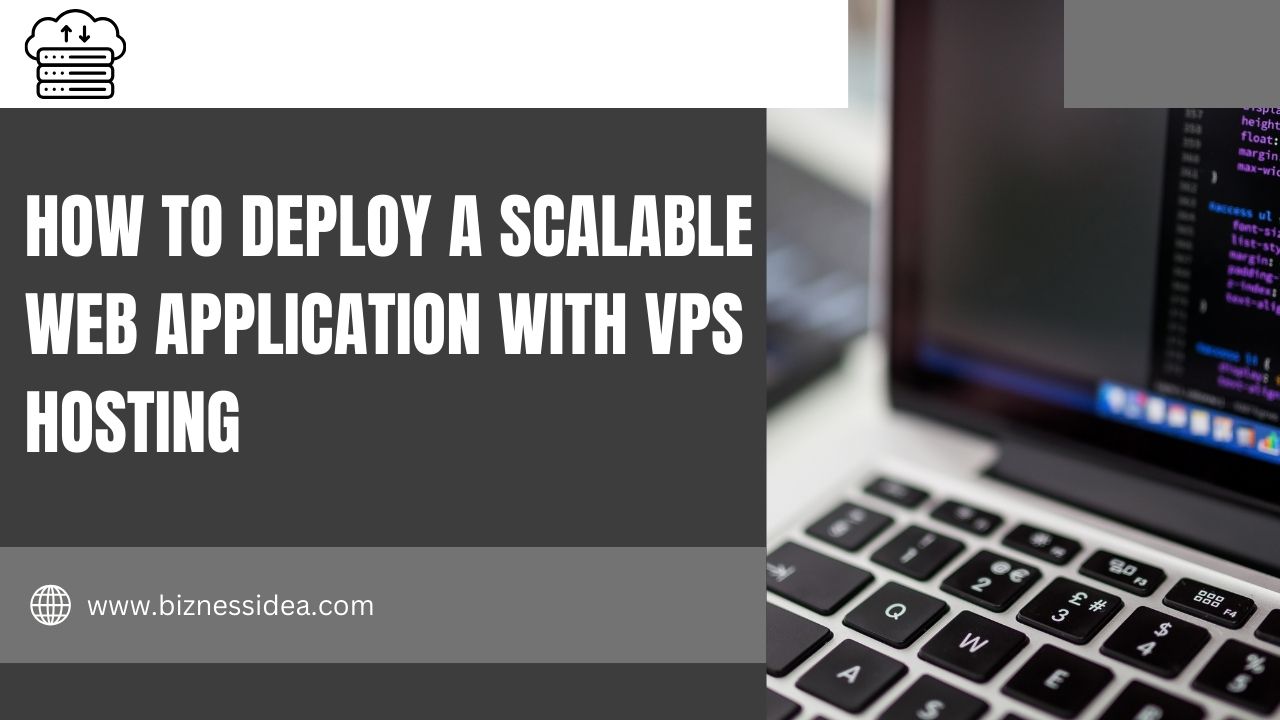Scalability is one of the most critical factors in modern web application development. Whether you’re running an eCommerce platform, SaaS product, or a content-heavy portal, your application must be able to handle growth—both in terms of users and resource demands. Shared hosting often fails to deliver the performance and flexibility required, which is why developers and businesses turn to VPS hosting. A Virtual Private Server (VPS) offers the perfect balance between cost, performance, and control. With dedicated resources, root access, and scalability options, VPS hosting ensures that your web applications can expand as demand grows. In this article, we’ll walk you through the key steps and best practices to deploy a scalable web application with VPS hosting.
Why Is VPS Hosting Ideal for Deploying Scalable Web Applications?
Before diving into the deployment process, let’s quickly recap why VPS hosting is a great fit for scalable web apps:
- Dedicated Resources: You get guaranteed CPU, RAM, and storage without interference from other users.
- Full Control: Root access allows you to customize the environment for your app’s specific needs.
- Cost-Effective Scaling: VPS plans are affordable and allow for easy upgrades as traffic grows.
- Performance: VPS ensures faster response times and higher uptime compared to shared hosting.
- Flexibility: Works for multiple frameworks, databases, and back-end environments.
With these advantages, VPS becomes the foundation for deploying scalable and high-performance applications.
Step 1: Choose the Right VPS Hosting Provider To Deploy Web Applications
The first step to deploy web applications is selecting a VPS provider that offers performance, reliability, and scalability. Look for features like:
- High-speed network connectivity (e.g., an Indian VPS server 1 Gbps for lightning-fast response in local markets).
- SSD storage for better application performance.
- Options to easily scale CPU, RAM, and bandwidth.
- Strong security measures and 24/7 support.
For startups or small projects, you can even begin with a cheap VPS server plan and scale resources as your application grows.
Step 2: Select the Operating System To Deploy Web Applications
VPS hosting allows you to choose between Linux and Windows operating systems.
- Linux VPS: Ideal for developers working with PHP, Python, Node.js, and open-source stacks. Popular distributions like Ubuntu, CentOS, or Debian are widely used.
- Windows VPS: Best suited for applications built on .NET frameworks, MS SQL databases, or ASP.NET technologies.
Pick the OS that aligns with your application stack and your team’s expertise.
Step 3: Configure Your Server Environment
Once your VPS is ready, configure it to support your application:
- Update Packages: Run system updates to ensure your VPS has the latest security patches.
- Install Web Server Software: Options include Apache, Nginx, or LiteSpeed.
- Set Up a Database: MySQL, PostgreSQL, or MongoDB depending on your project needs.
- Install Programming Language Runtime: PHP, Node.js, Python, or any required language/framework.
- Configure Firewalls & Security: Set up UFW or iptables to control server access.
This setup ensures your VPS is ready for a production-grade application.
Step 4: Deploy Your Application
There are several ways to deploy your web application on a VPS:
- Manual Deployment: Upload files via FTP/SSH, configure environments, and set permissions.
- Version Control Systems (Git): Use Git for streamlined deployments and rollbacks.
- Containers (Docker): For larger applications, Docker enables consistent environments and easy scaling.
- CI/CD Pipelines: Tools like Jenkins, GitHub Actions, or GitLab CI can automate builds, tests, and deployments.
Select a deployment method that aligns with your project’s complexity and team workflow.
Step 5: Optimise for Scalability
Deployment is only the beginning. To make your application scalable, focus on these optimizations:
- Load Balancing: Distribute traffic across multiple VPS servers to handle spikes.
- Caching: Use Redis, Memcached, or Varnish to reduce server load.
- Database Optimization: Implement indexing, query optimization, and connection pooling.
- Horizontal Scaling: Add more VPS instances as demand grows.
- Monitoring Tools: Tools like New Relic, Prometheus, or Grafana help track performance metrics.
Scalability means your app can adapt to increasing traffic without downtime or lag.
Step 6: Secure Your Application
Security is non-negotiable, especially for web applications handling sensitive user data. Key practices include:
- Enforcing strong passwords and SSH key authentication.
- Installing SSL certificates to secure data in transit.
- Regular backups to prevent data loss.
- Keeping all frameworks, libraries, and OS packages up to date.
Using intrusion detection systems (IDS) for advanced protection.
Step 7: Maintain & Upgrade Regularly
Scalable applications require ongoing monitoring and adjustments:
- Regular Updates: Keep your server, software, and dependencies patched.
- Resource Scaling: Upgrade VPS resources as demand grows.
- Traffic Monitoring: Use analytics to anticipate spikes.
- Disaster Recovery: Maintain offsite backups and test recovery procedures.
Continuous optimization ensures your application remains fast and reliable as it scales.
Conclusion
Deploying a scalable web application requires the right mix of hosting, configuration, and optimization. VPS hosting provides developers and businesses with the flexibility, control, and dedicated resources needed to ensure smooth scaling.
By choosing the right VPS provider, setting up the correct environment, and implementing scalability best practices, your application can handle traffic growth without compromising performance or security.













